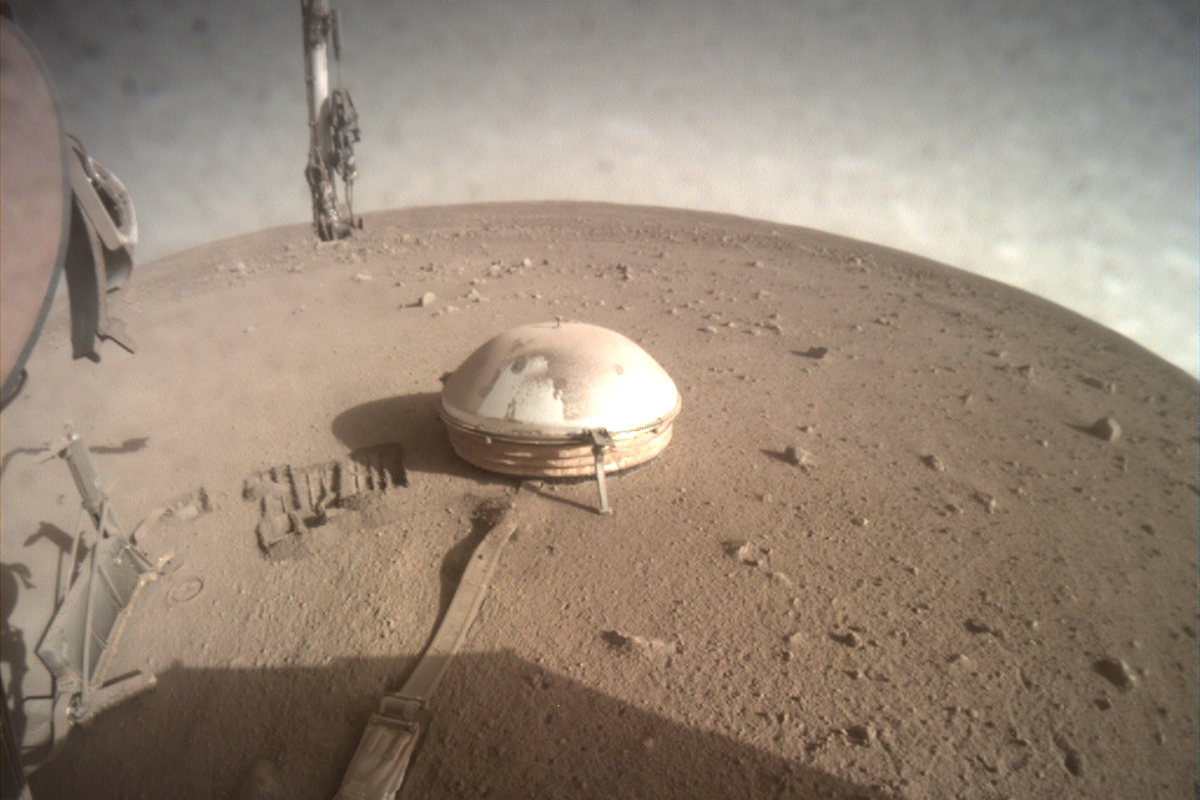
Researchers have shed new light on the origins and composition of planet Mars.
The study uncovered insights into the liquid core of the red planet, furthering understanding of its formation and evolution.
The research reveals the first detections of sound waves travelling into the Martian core, finding that it is slightly denser than previously thought.
Measurements from this acoustic energy, called seismic waves, also indicate the core is smaller than previously thought, and comprises a mixture of iron and numerous other elements.
We’ve made the very first observations of seismic waves travelling through the core of Mars— Dr Jessica Irving, University of Bristol
Researchers say the findings are all the more remarkable, as the mission was initially only scheduled to last for a little over one Mars year (two Earth years).
Despite Martian storms speeding up the accumulation of dust and reducing power to the Nasa InSight Mars lander, the space agency extended its stay, so geophysical data, including signals of marsquakes, continued to be gathered until the end of last year.
Lead author Dr Jessica Irving, senior lecturer in earth sciences at the University of Bristol, said: “The extra mission time certainly paid off. We’ve made the very first observations of seismic waves travelling through the core of Mars.
“Two seismic signals, one from a very distant marsquake and one from a meteorite impact on the far side of the planet, have allowed us to probe the Martian core with seismic waves.
“We’ve effectively been listening for energy travelling through the heart of another planet, and now we’ve heard it.
“These first measurements of the elastic properties of Mars’ core have helped us investigate its composition. Rather than being just a ball of iron, it also contains a large amount of sulphur, as well as other elements including a small amount of hydrogen.”
The study, led by University of Bristol researchers, used data from Nasa’s InSight lander, a robotic spacecraft designed to probe the interior of Mars, to compare seismic waves travelling through the planet’s core with those transiting Mars’ shallower regions, and modelled properties of its interior.
In 2018, the lander deployed a broadband seismometer on the Martian surface allowing for the detection of seismic events, including marsquakes and meteorite impacts.
The multi-disciplinary team of scientists used observations of two seismic events located in the opposite hemisphere from the seismometer to measure the travel times of seismic waves that passed through the core relative to seismic waves that remained in the mantle.
Dr Irving said: “So-called ‘farside’ events, meaning those on the opposite side of the planet to InSight, are intrinsically harder to detect because a great deal of energy is lost or diverted away as waves travel through the planet.
“We needed both luck and skill to find, and then use, these events. We detected no farside events in the first Martian year of operations.
“If the mission had ended then, this research couldn’t have happened.”
The authors used these measurements to build models describing physical properties of the core, including its size and elastic wave-speed.
The results suggested Mars’ core is slightly denser and smaller than previous estimates, with a radius of approximately 1,780–1,810 km.
The findings are consistent with the core having a relatively high fraction of light elements alloyed with iron, including abundant sulphur and smaller amounts of oxygen, carbon and hydrogen.
Dr Irving added: “The new results are important for understanding how Mars’ formation and evolution differ from those of Earth.
“New theories about the formation conditions and building blocks of the red planet will need to be able to match the core’s physical properties as revealed by this new study.”
The findings are published in the Proceedings of the National Academy of Sciences journal.







